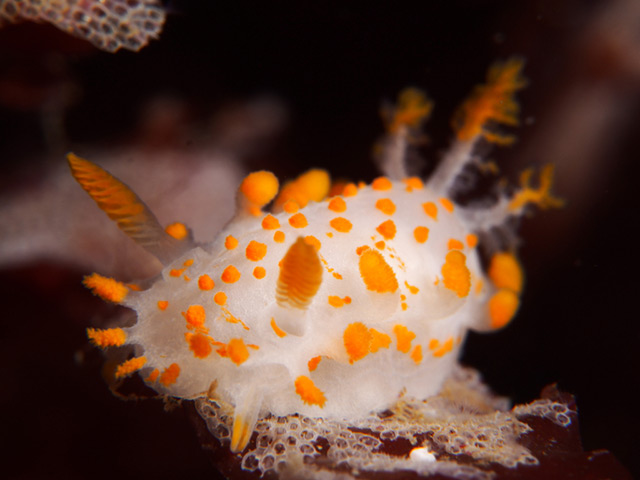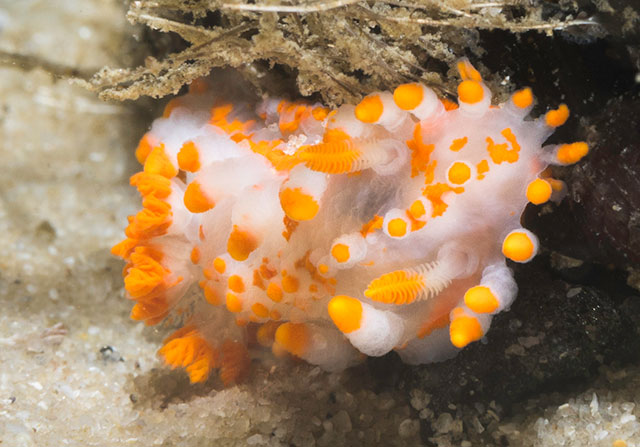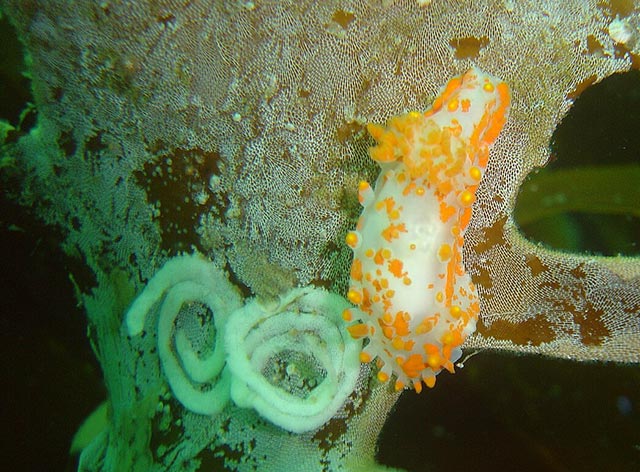

You can easily recognise this lovely little nudibranch by the orangy-yellow "clubs" around its body, curving inwards over its back.

They are normally up to 20 mm long, but Norwegian scientists have reported seeing some as large as 40 mm.
This nudibranch feeds on encrusting bryozoans like Electra pilosa and Membranipora membranace. These tiny boxes of creatures live in a colonies on kelp and other seaweed.

The three feathery appendages at the back are its gills.
The nudibranch's rhinophores, which it uses to smell or taste, are yellow tipped and lamellate or folded. These ridges increase their surface area and expands their chemoreception capabilities.

Like all nudibranchs, Limacia clavigera is hermaphrodite - both male and female at the same time.

Until recently Limacia clavigera was thought to be widely distributed, from the Atlantic coast of Europe, including the British Isles, to the Mediterranean, Azores and Canary Islands. It had also been reported in southern Africa. However researchers now believe that these sea slugs living so far apart may actually all look very similar but are six different species. Limacia clavigera is the North Eastern Atlantic species. The others have been classified as the smaller L. inesae, a new species living from the Med to the Canaries, and four other Limacia species in southern Africa.
Whichever species you see, it is always a delight.
Read More
Nudibranchs and Sea-slugs of the Isle of Man. Tim Nicholson.
Jessica A. Toms et al, February 2021 Marine Biodiversity 51(1) Disentangling species of the genus Limacia O.F. Muller, 1781, from southern Africa and Europe using integrative taxonomical methods, with the description of four new species. Mar. Biodivers. 51, 1 (2021).
Evertsen, J. and Bakken, T. 2002. Heterobranchia (Mollusca, Gastropoda) from northern Norway, with notes on ecology and distribution. Fauna norv. 22: 15-22
Animalia (Kingdom) > Mollusca (Phylum) > Gastropoda (Class) > Opisthobranchia (Subclass) > Nudibranchia (Order)